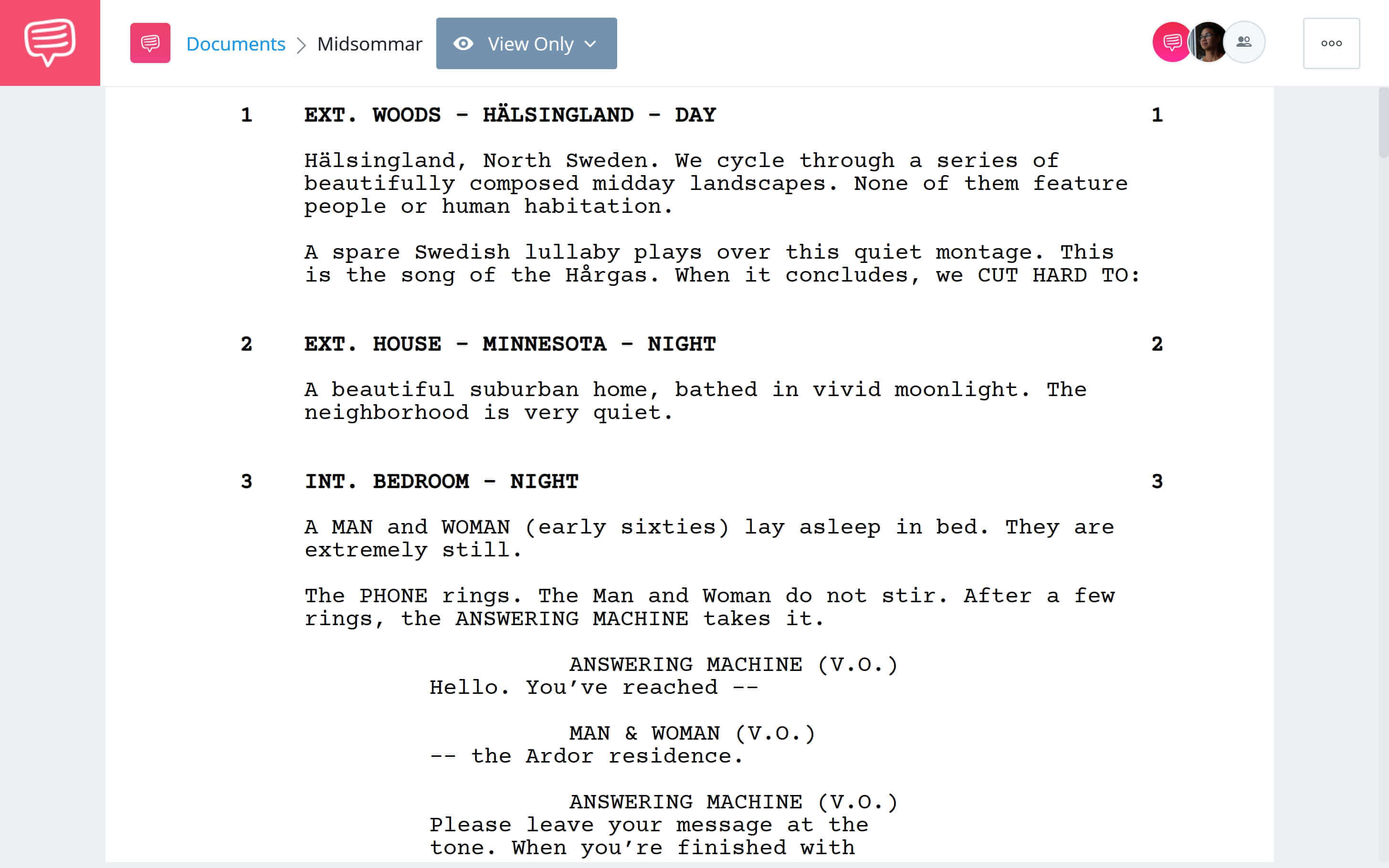So, you want to learn how to write a good horror story? Whether you want to know how to write a horror movie or how to write a horror book, the four steps outlined in this guide will get you started on the appropriate course of action and help you to align your creative goals. Writing horror isn’t all that different from writing for other genres, but it does require the right mindset and a creepy destination to work towards. Before we jump into the first of our four steps, let’s begin with a primer.
How to write horror
Before you get started
The steps outlined in this ‘how to write horror’ guide assume that you already have a grasp over the fundamentals of writing. If you do not yet understand the basic mechanics of prose, screenwriting, or storytelling, then you might not get everything you need out of this guide. Luckily, we have a litany of informative resources that can bring you up to speed on everything you need to know.
If you intend to tell the horror story you have in mind as a screenplay, then the best way to fast track your screenwriting education might be to read through some of the best screenwriting books or to enroll in one of the best online screenwriting courses.
Our guide to writing great scenes is another good place to start, and our glossary of screenwriting vocabulary is a great resource if you encounter any unfamiliar terminology. When you’re ready to start writing, you can get going for free in StudioBinder’s screenwriting software.
Now, we’re ready to jump into step one of our how to write horror guide. But, be warned, if you don’t already have a basic story concept in mind, you should consider that Step Zero.
There’s no concrete way to generate story ideas, but you can always look to creative writing prompts and indie films to kickstart inspiration.
HOW TO WRITE A HORROR MOVIE
Step 1: Research and study
Writing horror often begins by consuming great horror. We look to the stories of the past when crafting the stories of the present. Someone who has never read a horror novel or seen a horror film is going to have a much harder time writing horror than someone who is a voracious consumer of horror stories. By watching and reading, you can pick up plenty of tips for writing scary stories.
Before writing your opening line, be sure to do your research. It can be worthwhile to explore all manner of horror media. But for the purposes of this step, it’s best to focus in on the type of material you wish to create.
If you want to learn how to write a horror novel, then read as many horror novels as you can get your hands on. Our list of the greatest horror films ever made is a good place to conduct your research if you plan to write a horror screenplay. You can also check out our rundown of underrated horror films for even more research.
Here are tips on how to write horror from the master himself, Stephen King.
How to write good horror • Stephen King offers horror writing tips
It’s important to go beyond simply reading and watching horror and to begin to analyze the material. Drill down into why certain decisions were made by the writer and try to figure out why certain elements work or don’t work. It can often be worthwhile to explore material you consider bad as well as what you consider good, so you can learn what not to do.
Check out our analysis of Midsommar below for an example of how you can break down and explore the horror films that inspire you. You can also download the Midsommar script as a PDF to analyze the writing directly. You should check out our Best Horror Scripts post for more iconic script PDFs.
How to Write Horror • Read Full Midsommar Script
When consuming material to learn how to write a horror story, pay particular attention to the pacing and structure of the stories you’re inspired by. For example, if the style you find yourself most drawn to is slow-burn horror, then you might want to aim for a much slower pace than average with your story as well, but the build-up will become even more important.
Horror story writing
Step 2: Decide your type of horror
So, you’ve decided you’re writing horror, congratulations, you’ve settled on a genre. Now, it’s time to pick your sub-genre(s) and to decide on the specific avenue of horror to explore. There are many horror sub-genres to choose from. Just take a look at our ultimate guide to movie genres for quick rundown. And, check out the video below to see horror sub-genres ranked.
Ranking subgenres for inspiration • Horror story writing
Keep in mind that genres and subgenres can be mixed and matched in a multitude of combinations. For example, The Witch blends together the horror and historical fiction genres. From Dusk Till Dawn fuses action, crime-thriller, and vampire elements. And Shaun of the Dead fuses the horror and comedy genres by way of the zombie subgenre.
Our video essay below offers insights into Shaun of the Dead director Edgar Wright’s creative process. Check out our ranking of Edgar Wright’s entire filmography if you want even more.
How Edgar Wright writes and directs his movies • Subscribe on YouTube
Step Two is also the time to decide on the specific avenue you will exploit when writing horror. By “avenue of horror,” we mean the primary source(s) of tension and scares. Witches? Zombies? Cosmic horror? Body Horror? Social Horror? These are all different avenues that your horror story can take on, and just like with genres and sub-genres, mixing and matching is encouraged.
A horror story that exploits kills and gore as its avenue of horror will be written in a much different manner than one that focuses on a sense of creeping dread and leaves more to the viewer or reader’s imagination.
Related Posts
Horror story writing
Step 3: Mine your fears and phobias
You have decided on your genre and your avenue of horror, now it’s time to get more specific and drill deeper. For Step Three, go beyond asking what makes a story scary and instead figure out what makes your story frightening.
Depending on what you chose in Step Two, this might already be baked into your sub-genre and avenue of horror. For example, the home invasion sub-genre by nature mines a very real phobia that many people share.
The best home invasion films
However, if you chose to go with the zombie subgenre for example, you may need to work a little harder to discover what it is about your story that will scare audiences. Zombies on their own certainly hold the potential to be frightening, but audience overexposure to them throughout the years has gone a long way to lessen the scary impact they once had.
For examples of how to do it right, check out our rundown of the best zombie films ever made. And, for a different yet equally effective take on the sub-genre, check out our list of the best zombie comedies.
How to write a horror story • Exploit common phobias
The above video breaks down the statistics surrounding a number of phobias. One common piece of writerly wisdom is “write what you know.” When writing in the horror genre, we can tweak that advice to, “write what scares you.” Mine your own fears and phobias when crafting your horror story; there are sure to be others out there who get creeped out by the same things.
This is also the step where you should try to discover your X-factor. What is it that sets your story apart from similar horror stories? If the answer is “nothing really,” then it might be time to take your concept back to the drawing board.
How to write a horror story
Step 4: Keep your audience in mind
From this point on, you are ready to start writing your horror story. Much of the writing process will be carried out in the same way as you would write a story in any other genre. But there are a few extra considerations. Put all that research you did in step one to work and ensure that your prose or screenwriting is well balanced and doles out the scares at a good pace.
You will want to find a good middle ground between sacrificing story and character development and going too long without something to keep your audience creeped out. Narrative pacing is important in every genre, but horror writers also need to worry about pacing their scares, similar to how someone writing an action film needs to deliberately pace out their big action sequences.
How to write a horror story • Keep pacing in mind
Decide on who your target audience is from the jump and keep them in mind while you write. There can be a significant difference between horror aimed at teens vs. horror aimed at a mature audience. In film, this can mean the difference between shooting for a PG-13 rating instead of an R rating.
In fiction, this decision might manifest as a plan to market directly toward the young-adult crowd. Horror aimed at children, like Frankenweenie or The Nightmare Before Christmas, is drastically different from other types of horror aimed at older audiences.
Use your target audience as a guiding star that informs all of your narrative decisions as you write. Now, it’s time to put everything you just learned about how to write good horror stories to use.
UP NEXT
The Greatest Horror Movies Ever Made
If you are stuck on step one and looking to find some inspiration, our list of the greatest horror films ever made is a great place to look. You are sure to find something to get your creative juices flowing within this lengthy list. Writing great horror starts with consuming great horror, coming up next.

